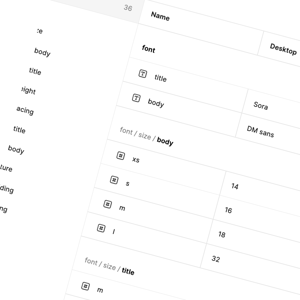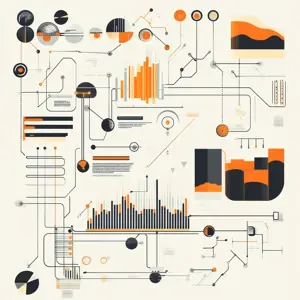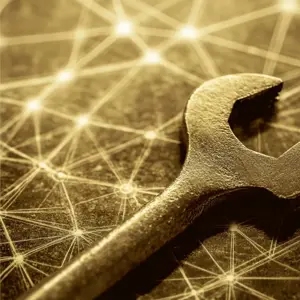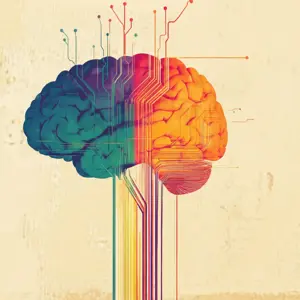Myth #1: "AI will replace all jobs"
Like with many myths, the idea that AI will replace jobs and make roles obsolete is based on a shred of truth — or, more accurately, a misinterpretation of this truth. AI is bringing changes — this is true. And just like any innovation in industrial technology, this will result in shifts in the job market. However, this does not necessarily mean replacement.
AI is developed and implemented on a task basis. In other words, we won't be developing AI systems that can become postal workers, accountants, or manufacturing specialists. Instead, AI will be used to assist human personnel with tasks, not take their jobs from them.
When wielded in the right way, AI becomes a "helper" rather than a "replacer." For example, a study found that AI increases worker productivity by 14%, actively supporting them by reducing burnout while also boosting customer experience.
Myth #2: "AI is only for big tech companies"
This is an example of a myth that's already dying out, as increasing numbers of people start to experience AI for themselves. Basically, once upon a time, it seemed like only the big tech companies — with their huge research departments and vast budgets — could use AI.
These days, more and more business owners are learning this is not the case. Around 57% of small and medium-sized enterprises in the UK are already using AI to run their operations, while figures released by the U.S. Chamber of Commerce showed 42% of Coloradan businesses were using AI to level the playing field against bigger competitors.
Take a look at the interfaces of modern AI tools and you'll see how accessible they have become. User-friendly, intuitive solutions have put AI in the hands of everyone, so the idea that only the biggest tech firms on the planet can use this technology is simply outdated.
Myth 3: "You need perfect data (or tons of data) for AI to work"
There's a popular fallacy in life and in work, and it goes like this: "Now is not the right time; once I do [X], then I can do [Y]." Only, there's never a right time, and you always encounter another X that stops you from doing the Y.
AI is a little like this. Many business owners feel that they don't have enough data to leverage the best from AI, or that their data isn't good enough. Once we've gathered more data, or improved the data, they say, then we can implement AI.
In fact, many businesses begin with small, imperfect datasets, and they improve this as they go. And they're gaining a head start on their competitors as a result.
Myth #4: "AI is always 100% accurate and unbiased"
This myth stems from a set of beliefs that have existed since the dawn of the digital age. Computers = cold, calculating, data-driven. Humans = partial, emotional, fallible. In other words, AI is always right and deals only with "facts." Humans, on the other hand, are often wrong and governed by "feelings."
The problem here is that AI systems require data. If there are implicit biases or errors in that data, then the AI will reflect this. A few years ago, Amazon found this out, to their cost. They implemented an AI tool that could screen applicants without human bias or emotion. But because the tool was trained on existing hiring data, which favoured male candidates, it displayed a significant bias against women, and was subsequently scrapped.
To put it briefly, assuming that AI is immune from bias is not only wrong — it can even result in a dangerous misperception of how AI works.
Myth #5: "AI is a magic wand that solves everything instantly"
A common theme here is that myths are often based on misunderstandings of what AI is and what AI does. This is certainly true here. Artificial intelligence is highly effective when it is tasked with solving a concrete issue for which there is already a large store of data — achieving a 15% reduction of wasted materials in a manufacturing process, for example.
In this example, we've got data on current processes, how much material is being wasted, and how this wastage can be addressed. We also have existing systems that can integrate with the AI solution. On the other hand, if we simply say "improve the supply chain," AI isn't going to do very much. A generative AI tool might give you some response gleaned from the internet about how the supply chain can be improved, but it's not going to bring you an innovative, "magical" solution.
AI is powerful, for sure, but it's not magic. It needs frameworks and objectives if it is to be effective.
Myth #6: "AI is just a fad, and not relevant to my industry"
There's a tendency to describe every new thing that comes along as a fad, as a trend without a future. In some cases, this is fair enough — minidisc players and Betamax were pretty popular for a while and sank without a trace. In other cases, less so — smartphones and laptop computers probably seemed pretty faddy a decade or so ago, but they're here to stay.
The bottom line is, AI is going to be here to stay too. All the indicators suggest this. McKinsey has predicted that AI will add $13 trillion to the global economy by 2030. Goldman Sachs is a little more conservative, predicting a $7 trillion injection in GDP by 2035. In either instance, the experts agree that AI is not a fad, and is going to be seriously impactful.
This means the technology will impact every industry. Whether you run a fintech startup in the City of London or a carbon offset forestry project in Lapland, the message is clear — your industry will be impacted by AI, and probably has been already.
Reject the myth, embrace the reality
AI is going to be a huge part of business in the coming years, so it's time to reject the mythology we've looked at today and embrace the reality. By communicating the benefits of AI to your team and dispelling the harmful untruths, you can begin laying the groundwork for streamlined adoption. The age of AI is here, and myths, legends, rumours, and hearsay aren't going to help anyone get the best out of the technology.























